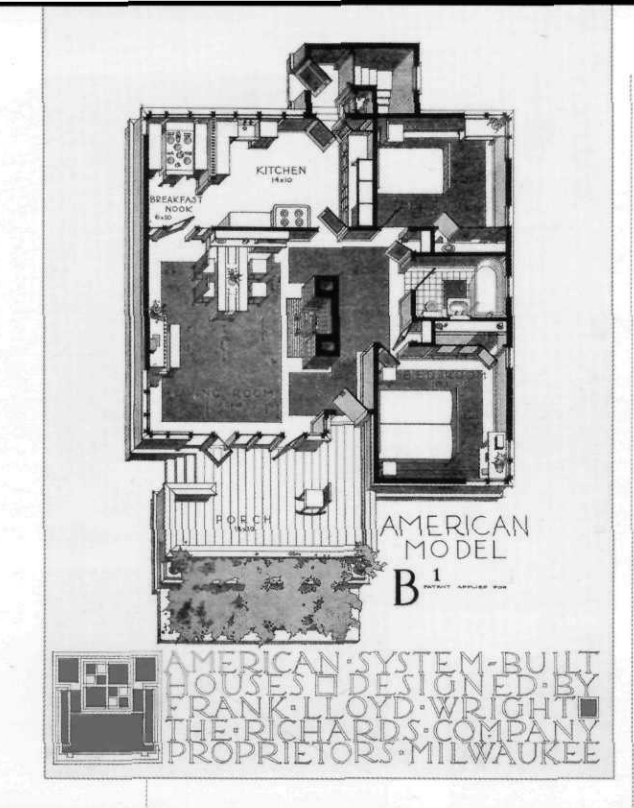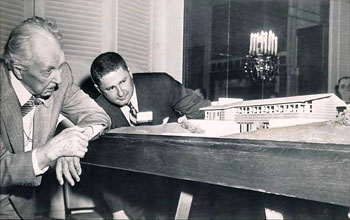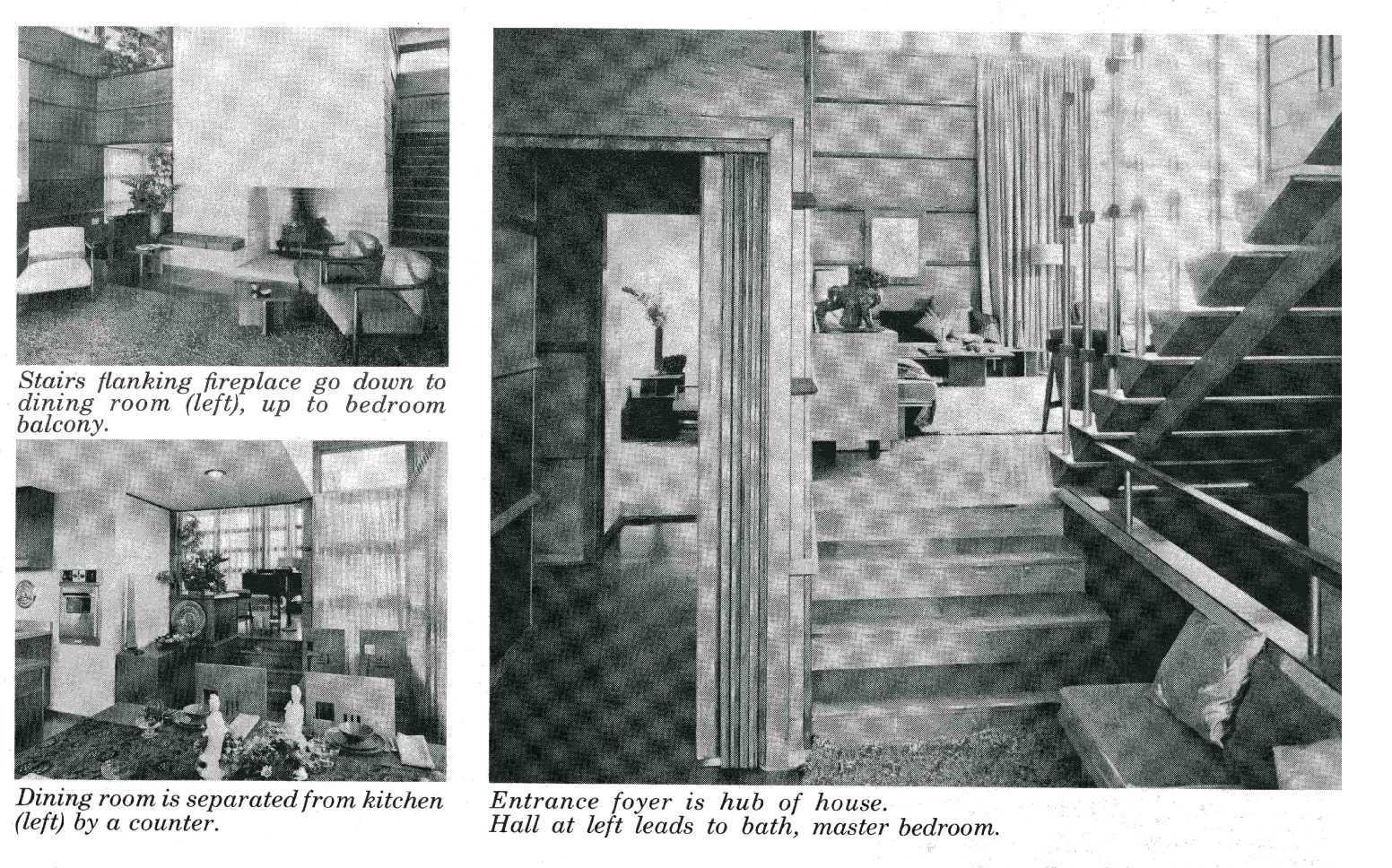Chapter 1: Wright’s Life and Career
Prefabrication
Neha Anand and Emma Fisher
Towards the end of his career (1943 – 1959), Frank Lloyd Wright acted on a long-harbored interest in designing prefabricated homes for the masses. These homes would be affordable and could be easily be built in any location. Prefabricated homes gained popularity in America after the Great Depression and World War II. The Great Depression had created a need for homes that were cheaper and more affordable while returning veterans from World War II had also needed homes to start their families. World War II had also increased labor costs, so it was important that homes were easy and quick to build. [Larkin and Bruce, 1993). Cheaper homes, though, did not need to lack in style and Wright vowed, “to make well designed homes for the common people.” Wright took the idea of a well designed home and adapted it to be made out of easily mass reproduced material shapes and sizes, later called modular designs.
Wright’s interest in standardization had long been a focus of his career before his prefabricated homes of the 1950s. In his 1901 speech “The Art and Craft of Machine”, Wright sung praises of the importance of mechanization and industrialization in architecture. Wright admired the clean lines and simplicity that machines allowed in his work. (Art and Craft of Machine) Wright’s first venture in prefabrication was the “American System-Built Homes” project, focusing on pre-cut, moderate-sized and non-custom homes. Collaborating with Milwaukee contractor Arthur L. Richards beginning in 1915, Wright designed a number of homes around the Milwaukee and Chicago area. West Burnham St. on the south side of Milwaukee features the largest concentration of these homes, where six American System-Built Homes are located. Wright focused a lot of his Milwaukee prefab efforts on a particular model, B1, the design of which he revised and redesigned many times. A home of this model in Milwaukee has recently been fully restored by the Frank Lloyd Wright Wisconsin Heritage Tourism Program. (Holzheuter)

In the 1950s, late in his career, Wright rekindled his interest in prefabrication by working alongside Madison contractor Marshall Erdman to make modular homes. Erdman could craft materials in his factories and then sell homes with the name “Frank Lloyd Wright” attached to the project. Frank Lloyd Wright had designed three different prefabricated homes for Erdman, out of which only two were actually constructed. Erdman and Wright’s first prefab collaboration design was the simplest and was built on nine different sites. This home was 2,130 sq. ft. and included both a basement and a carport, with the cost totaling $16,400. It would have been able to be built in an average of four months. The sites of these prefabricated homes include the: Van Tamelen Residence (Madison, WI), Jackson Residence (Madison, WI) Iber Residence (Stevens Point, WI), Post Residence (Barrington Hills, IL), Cass Residence (Richmond, NY), Zaferiou Residence (Blauvelt, NY), Mollica Residence (Bayside, WI) and LaFond Residence (Saint Joseph, MN). The second prefabricated design was first seen in Madison as part of a 1959 Parade of Homes and was a version of Wright’s “one room house”. Two of these were built including the Rudin House in Madison, WI and the McBean House in Rochester, MN (Storer, 2006).

The Erdman Prefab #2 design was meant to create a space that continues throughout the inside and forms a one room home. The homes were meant to be modular and changeable with an easy ability to add sections due to the repeated pattern. Bedrooms had privacy through folding walls that when open still had a sense of continuity. The retracting wood panels reflected Wright’s interest in Japanese architecture and echoed the paper walls pockets used in that architecture. The exterior of the homes had large numbers of windows running from floor to ceiling as well as a ribbon of windows under the roof. Privacy was further achieved by taking into account nature and the building’s site plan in order to put the glass walled spaces towards the back of the lot and the private side with the band of windows facing the street (Wisconsin Historical Society).

Prefabrication, while not a major focus of Wright’s production, was nonetheless something that spanned across his career and his efforts are well-documented in Madison. Middle-class moderate housing has been an important fixture of American architecture since the industrial revolution, and Wright was quick to secure his place in what he saw as the future of domestic housing.
Works Cited:
Larkin, David, and Bruce Brooks Pfeiffer. Frank Lloyd Wright: the Masterworks. New York: Rizzoli, 1993. NA 737 W7 F72 1993 c.2
Storrer, William Allin. The Frank Lloyd Wright Companion. Chicago :University of Chicago Press, 2006
“Wisconsin Historical Society.” 110 MARINETTE TRAIL. N.p., n.d. Web. 06 Apr. 2016.

